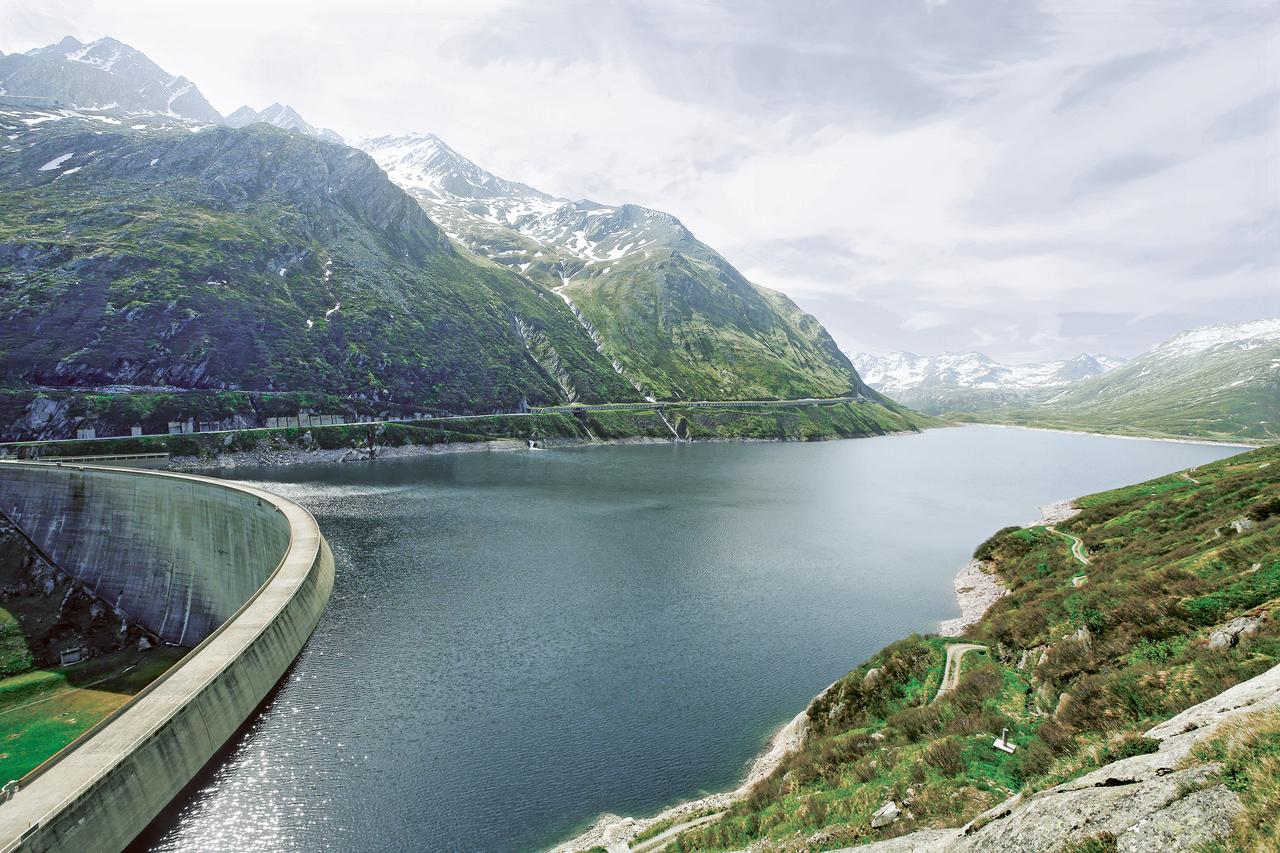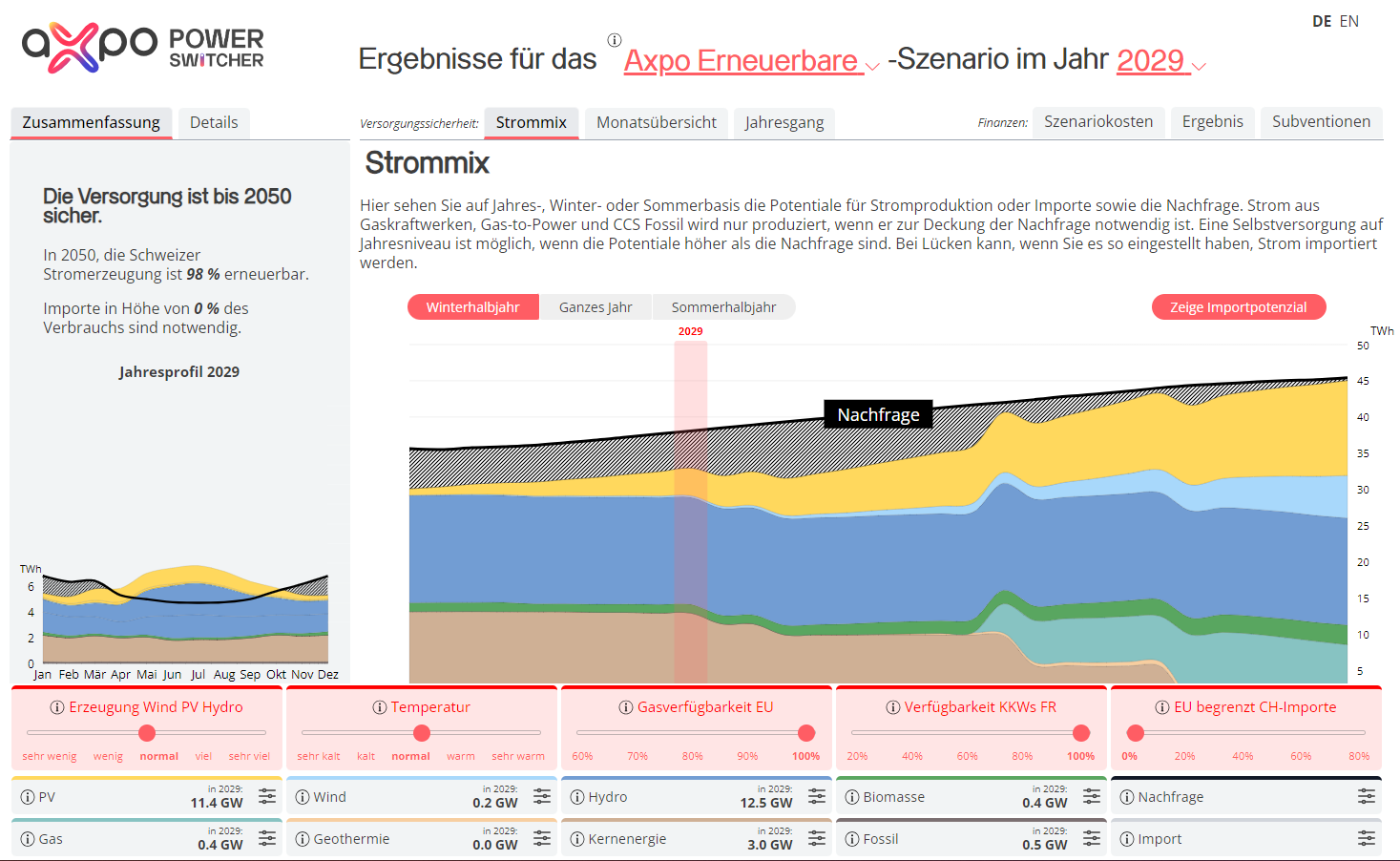23.09.2021 | Market insights: a fuel that fills the gap between fossil and renewables energies
The role of gas as the world moves towards a low carbon economy
The shift away from coal and towards climate neutrality is in full swing. In this context, natural gas in general and LNG (Liquefied Natural Gas) in particular, are becoming increasingly important on a global scale. Axpo expert Andy Sommer, Team Leader Fundamental Analysis & Modelling, gives some insights in this special report on what role natural gas will play in the coming years.
The world is slowly starting to move towards the goals defined under the Paris Agreement. Back in 2015, 196 countries signed the Agreement to keep the increase in global average temperatures to well below 2°C above pre-industrial levels. A few countries, such as Switzerland, South Korea, Japan and the EU are aiming for climate neutrality by 2050. China has announced a goal to be carbon neutral by 2060. Many large international companies, such as Mercedes-Benz, Maersk, Danone and Starbucks are advancing towards climate neutrality as well.
What does this mean for energy markets, and especially for natural gas? Is it realistic to assume that renewables will cover all energy needs in the future? And if so, will gas-fired power plants and pipelines end up as stranded assets?
Carbon pricing and gas in the current energy mix
Besides subsidies for renewable energy technologies and the forced closure of old and dirty coal-fired power plants, one of the most powerful tools to control greenhouse gas (GHG) emissions is considered to be a price tag on emissions. The theory is that high emission prices will raise the operating costs of emission-intensive operations, such as coal-fired power production. Lower emission technologies, for example gas-fired plants, will become more profitable by comparison. This creates a window of opportunity for gas. Emission-free technologies will not feel a financial burden at all, but are currently often still too expensive to build in the required capacity.
The European Union currently runs the Emissions Trading System (EU ETS), designed as a marketplace to buy emission allowances for specific sectors out of an ever-shrinking supply pool. China has recently introduced a similar nation-wide ETS by 2024. In addition, South Korea, Germany and other nations already impose taxes on GHG emissions within certain sectors.
However, the number of countries working under, or planning such schemes is currently still very low. This lack of action has meant relatively low-cost coal has remained the favoured means of electricity production in many regions, especially in Asian countries where population and economic growth is high and comes with a corresponding demand for energy. Therefore even the recent decline in installation costs for renewable energy technologies has not been able to slow the overall increase of global GHG emissions.
With 42%, the electricity sector is the largest single contributor of global greenhouse gas emissions. But other sectors combined emitted 58% of the total in 2018.
The transportation sector emitted 25% of the 33.5 billion tonnes of GHG produced. Manufacturing industries are close behind, with a 19% share.
International Energy Agency (IEA) statistics show three important trends. The “energy transition” in Europe has helped reduce carbon emissions on the continent by 15% between 2010 and 2018. The shale gas revolution in the US cut emissions by about 7%. But non-OECD Asian GHG emissions grew by more than 25%, or 3 billion tonnes, over this time period.
Gas markets will play an important role in the global energy transition
Axpo expects carbon prices in the EU to rise strongly in the coming years. Other countries and regions are likely to follow suit by pricing GHG emissions in one way or another as well. Since we can anticipate the installation costs of renewable energy technologies to decline further, we agree with the IEA’s assumption that low-carbon technologies will be the primary driver of net primary energy demand growth globally until 2030 and even beyond.
However, we also believe that natural gas will play a very important role in the current energy supply environment.
For one, Europe will continue to phase out coal in the coming years, and a similar trend is emerging globally. Coal demand appears to have peaked in the past decade. This factor, coupled with global economic growth, and faster paced increases in energy consumption, means natural gas will be an important and growing part of the energy supply mix, despite global nuclear power and renewable energy capacities being forecast to rise strongly in the decades ahead.
Secondly, renewable energies cannot yet offer a reliable solution because they have an intermittent production profile. Building interconnectors and developing sufficient battery capacity to bridge prolonged periods of low wind or reduced sunshine will take time. Gas plants are in a prime position to provide a stable supply of electricity in a highly flexible manner. Whether this can be done on the wholesale market or as a flexible capacity reserve with the grid operator remains however to be seen.
And thirdly, reaching a net-zero carbon world requires significant decarbonization in other sectors, most of all transportation and manufacturing. A technology to help with that is already available; we will see strong growth in the mid and longer-term use of hydrogen. Although a green form of hydrogen – produced with electricity from renewable sources – is clearly the preferred option, wind and solar capacity will likely take some time to meet the levels of supply required. A cheaper option is to use available natural gas in the hydrogen production process, best in combination with a carbon capture and storage (CCS) technology, known as “blue hydrogen”.
LNG growth is expected to continue
Liquefied Natural Gas (LNG) has long been seen as the fuel to bridge the gap left after higher polluting fuels like oil and coal decline in favour of renewables. LNG also offers the opportunity to monetarise stranded assets and supply faltering energy markets with fuel that has lower CO2 emissions.
LNG trade reached 355 million tonnes per year (mtpa) or 5300 TWh equivalent in 2019, with the market growing 13% y-o-y following an investment spree in the early 2010s when oil and gas prices were high. Owing to low investment in new LNG projects and massive delays in recent years, however, LNG trade growth is expected to slow down significantly in the period from 2021 to 2024. . However, the demand for LNG will continue. From the mid-2020s onwards, the volume of available trade is then expected to increase again, especially in the markets of Northeast and South Asia, where financial incentives will accelerate a reduction in CO2 emissions. In these markets, a considerable market share remains with the oil and coal industries, so LNG is viewed as a bridge to renewable sources when costs fall in years to come. According to forecasts, this will almost double the trade volume to 700 million tonnes per year (10 400 TWh) by 2040[1].
In Europe, while there will be a substitution of gas for coal, lignite and nuclear in the power markets, the gas share will not grow as quickly due to the rapid rise in renewable capacity offsetting losses elsewhere. Instead, LNG is seen more as filling the supply gap amid declining domestic production in the UK, the Netherlands and to a lesser extent Norway but also with uncertainty surrounding political pressure on Russian gas imports.
Author: Andy Sommer, Team Leader Fundamental Analysis & Modelling




.jpg)





